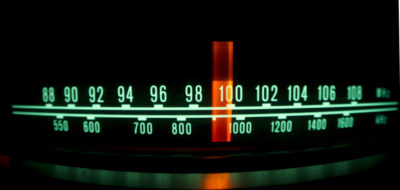As one window closes, another one opens — good news for AM broadcasters looking to acquire FM translators to rebroadcast their signals.
As scheduled, this Thursday will mark the closing of the Federal Communication Commission’s first FM translator window. It opened in January as part of the commission’s AM revitalization initiative and allows Class C and D AM stations to apply to modify or relocate one authorized non-reserved-band FM translator station up to 250 miles.
But immediately thereafter, on Friday, a second window opens for a larger group of licensees: Class A and B AM stations as well as Class Cs and Ds that did not file in the first window. That opportunity will be open until Oct. 31.
Keep in mind the key rules when it comes to participating: each AM station may file one application to move or modify an FM translator. If a broadcaster already filed an application in the first round and was rejected, it is barred from filing another in the second window.
Also, an applicant can change the translator’s frequency once an application is approved, but the translator must be used to rebroadcast the designated AM station for the next four years.
There are several other no-nos: The commission will dismiss an application that plans to rebroadcast an AM station already listed as the primary station in a prior window application; and it will dismiss any translator application that seeks to modify an FM translator station currently authorized in the reserved band.
Guidance for broadcasters is being offered by several law firms as we scoot up to the second window. Pillsbury Winthrop attorney David D. Burns suggested in a recent blog post that Class A or B AM stations that hope to relocate a translator get their modification application filed right away on Friday “in order to give yourself the maximum protection against being bumped by an earlier-filed mutually exclusive application,” Burns said.
Also, Class C or D AM stations should file before the end of Thursday, if possible. While these stations can still file in the second window, Burns expects a wave of new modification applications “that will change the translator landscape significantly.”
An applicant that is in the midst of acquiring a translator may file an application in one of these windows, but use care, Burns said. If an acquisition deal falls through, for example, the reason will be irrelevant to the FCC. Therefore, he suggests that such applicants pay careful attention to due diligence, the closing conditions in the acquisition agreement, the compliance of the proposed move with FCC technical rules, and the financing for the acquisition. If a deal falls apart, there’s no second chance to file an application. “You’ll be sitting out the filing window watching your competitors get their FM translators,” he said.
Traffic was brisk in the days following the opening of the first window last winter. More than 700 applications were filed, more than half of them on the first day; as of today some 630 have been approved.
Many involved in this first FM translator window have seen the opportunity as a boon for AM broadcasting.
Edgewater Broadcasting entered into agreements with AM stations during this first window to make construction permits and licenses available to some AMs. Executive Director Steve Atkin said, “Translators provide an important compliment to an AM station — a complimentary FM dial position enables an AM station to solidify their current audience with a new FM frequency choice; introduce their AM format on a brand new media, and much of the time on that new media to a new audience; and translators enable AM stations to stabilize current revenue and/or generate new sustainable monthly and ongoing revenue.”
“[It] also solidifies and/or adds market value to the new AM/FM translator combo,” he said.
The FCC made available two search tools to locate eligible translator stations and identify rule-compliant FM translator channels. The first identifies all translator stations authorized at locations up to 250 miles away; the second (see image above) identifies channels that are tentatively available for use by FM translators at any location.
Halfway through the first window, in March, FCC Media Bureau Chief Bill Lake wrote in a blog post that the FM translator windows were a cornerstone of the commission’s AM revitalization efforts.
via Radio World


